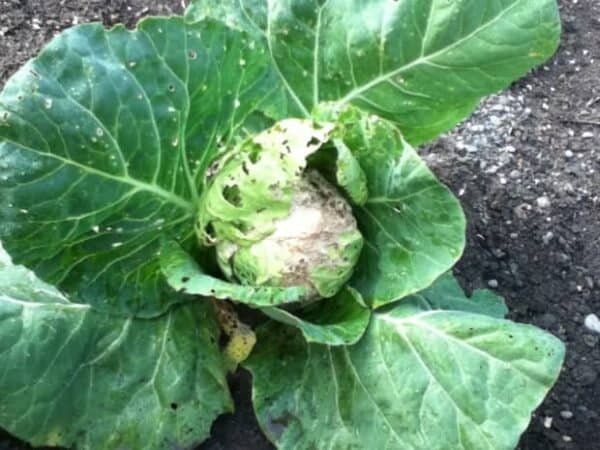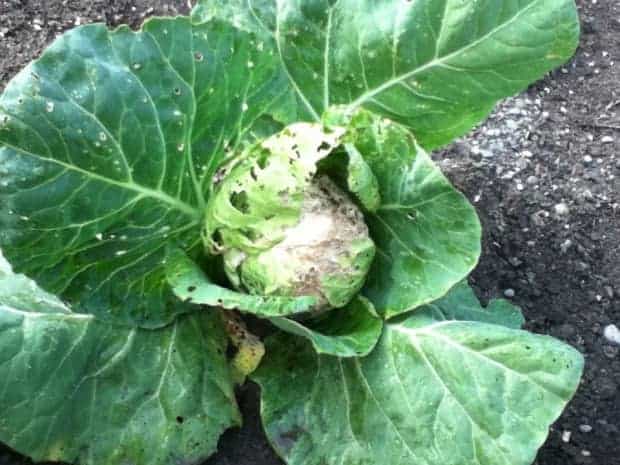
It may be really satisfying to grow cabbage. However, it’s disappointing to harvest cabbage after the winter only to discover that cabbage worms have been munching on it. It’s critical to keep an eye on your cabbage crop, spot pests, and take swift action to eradicate cabbage worms. If left unchecked, they can seriously harm your entire crop.
The fact that they don’t simply target cabbage plants is another reason to exercise caution. They also eat radishes, mustard greens, and Brussels sprouts. Your first line of protection against these vilified worms is to know what to do.
The cabbage worm is the larval stage of the little white butterfly, also called the cabbage white butterfly, as well as the huge white butterfly. They were originally found in North America in 1860 and are widespread in temperate regions of the planet. It quickly spread to other parts of the continent, and by 1886, it had made significant inroads into the Rocky Mountain and Gulf Coast states. The cabbage worm is predominantly a pest of cabbage, although it also affects other vegetables, including brassica crops, particularly those that belong to the mustard family.
Where there is a brassica, the imported cabbage worm and its relative, the cabbage looper, are frequently present. They go through numerous life cycles each year, and they can be especially harmful in regions with year-round moderate weather.
Cabbage worm damage recognition
By looking for cabbage worms on your plants or cabbage butterflies hovering at the base of plants, you may spot cabbage worms and the harm they do. The leftovers from the bugs’ feeding can be used to identify their presence. They leave behind spherical, dark greenish-brown feces in the locations where they eat. In this situation, the leaves or heads of the cabbage or whatever crop you are cultivating are probably going to have holes in them.
Due to the fact that cabbage heads grow in layers of thick leaves, you would believe this is not a major deal. However, by eating a succession of erratic holes in leaves, worms can bore into heads. The existence of eggs is another sign that you have a cabbage worm problem. These are typically elongated, pale or yellowish, have a point at the top, and have sharp ridges down the sides.
Cultural Control
There are several safe natural therapies and techniques to control cabbage worms:
- Plant barriers. The following plants are known to control cabbage worms: garlic, allium, thyme, tomatoes, onions, sage, borage, nasturtium, tansy, and rosemary.
- Bring in insect predators. To draw local predators, cultivate flowery plants and herbs. Other insects like wasps, yellow jackets, ground beetles, and spiders can all be attracted to the garden to kill these worms. All day long, the braconid wasp will feed on these caterpillars.
- Entice the presence of avian predators. House sparrows, skylarks, and goldfinch skylarks are some of their predators, so if you can entice those birds to your yard, you may enlist their assistance.
- Rotate your harvest. Future pest populations will be lowered by crop rotation. This implies that you occasionally grow a new kind of plant in that area of your garden.
- Clear away plant detritus. Quickly remove any old or dead plants. The caterpillar will spend the winter among such plant detritus while in its pupal stage.
- The eggs and pupa can be removed by tilling the soil many times between plantings.
- Every week, remove worms by hand. An infestation can be slowed by manually control the worms (but if your infestation is anything like the one I had on my kale last season, you will never win). Pick them off at least once a week while wearing gloves. (You may break them up or submerge them in a jar of soapy water.)
- Put netting over the plants you have. To prevent butterflies from laying their eggs on your plants’ leaves, cover them with a thin layer of nylon cloth. (Do this before you notice any pest indicators since the net may stop worms from being eaten by their natural predators).
- Use natural pesticides, such as cornmeal. There are several organic and natural uses. The worms can be killed by sprinkling dry cornmeal or rye flour on wet leaves. They devour it, bloat, and eventually pass away. Diatomaceous earth is another option.
Biological Control of Cabbage Worms
How to control cabbage worms by a biological method ? The use of Bacillus thuringiensis var. kurstaki is the most widely used and one of the most successful organic pest management methods. In the business world, this is frequently referred to as Bt or BtK. Spraying your plants with this bacterium won’t affect the plants themselves, but it will control caterpillars and worms that eat plants.
If you’d rather not use a spray, BtK is also offered in a powdered version. The bacteria that the caterpillar ingests quickly produce a toxin that curbs the worm’s appetite when it feeds on plants that have been sprinkled. It stops eating as a result, starving to death in a short period of time. Use this only if you can see the worms or their yellow eggs, since it may kill certain beneficial butterfly larvae (like monarch caterpillars).
Cabbage worms can also be managed using neem oil. In light of this, regularly misting your garden with a neem oil solution may help your plants become less alluring to pests. Neem oil won’t usually eliminate cabbage worms if your plant is already afflicted, though.
Control of Cabbage Worms Using Insecticides
There aren’t many organic pesticides available besides BtK that can kill cabbage worms while they are eating. Neem oil can be helpful, but only for coating and suffocating cabbage butterfly eggs. Neem should only be applied to flowering plants early in the day, before the dawn and peak pollinator activity. Before nocturnal pollinators emerge at night, is an alternative to this period.

